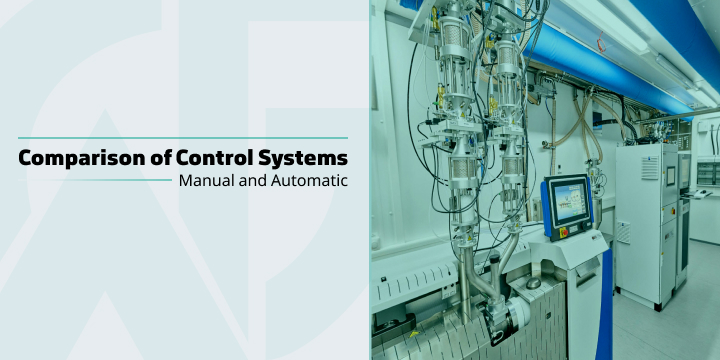Control systems play a critical role in managing processes and operations across industries, daily life, and technology. These systems are broadly divided into two categories: manual and automatic control systems. In the following, these two systems are examined from different perspectives:
Definition and Functionality
Manual Control:
In manual control systems, humans are entirely responsible for overseeing and executing processes. All decision-making, adjustments, and corrections must be performed by the human operator. For example, when driving a car, the driver must directly control speed, direction, and stopping.
Automatic Control:
Automatic control systems operate based on sensors, pre-programmed instructions, and algorithms. These systems automatically analyze conditions and implement necessary actions. For instance, a smart thermostat controls the temperature automatically according to the user’s settings.
Precision and Speed
Manual Control:
The precision and speed in these systems depend on the operator’s individual abilities. Human errors, fatigue, or inattention can lead to decreased efficiency. For example, a human operator may make mistakes during work, leading to errors in the process.
Automatic Control:
These systems operate with high accuracy and speed because they do not rely on human input and make decisions based on real-time data. For example, in industrial production lines, automatic machines can assemble parts with high precision.
Cost
Manual Control:
Manual control systems have lower initial costs because they do not require advanced equipment or complex software. However, ongoing costs like labor can be high.
Automatic Control:
The initial installation and setup costs are higher, but in the long term, they are more cost-effective due to reduced human labor and increased productivity.
Flexibility
Manual Control:
These systems offer greater flexibility because humans can better manage unexpected conditions. For instance, a driver can make decisions when faced with a sudden obstacle.
Automatic Control:
These systems typically operate based on predefined scenarios and may face limitations when dealing with unforeseen circumstances. However, with advancements in artificial intelligence, these systems are becoming more intelligent and adaptable.
Applications
Manual Control:
Manual control systems are used in situations where human decision-making or direct interaction is required. Examples include manual driving, crane control, and managing small-scale processes.
Automatic Control:
These systems are employed in industries such as mass production, HVAC systems, self-driving cars, and advanced technologies.
Advantages and Disadvantages
Manual Control:
Advantages: Lower initial cost, high flexibility, suitable for unpredictable conditions.
Disadvantages: Lower accuracy, human fatigue, slower speed.
Automatic Control:
Advantages: High speed and accuracy, reduced human error, increased productivity.
Disadvantages: High initial cost, limited in responding to unexpected conditions.
Conclusion
The choice between manual and automatic control systems depends on the needs, budget, and application type. While manual control systems still have many use cases, automatic control systems play a more prominent role in modern industries due to their precision and efficiency. The integration of both systems in conjunction can also contribute to increased productivity in many situations.

